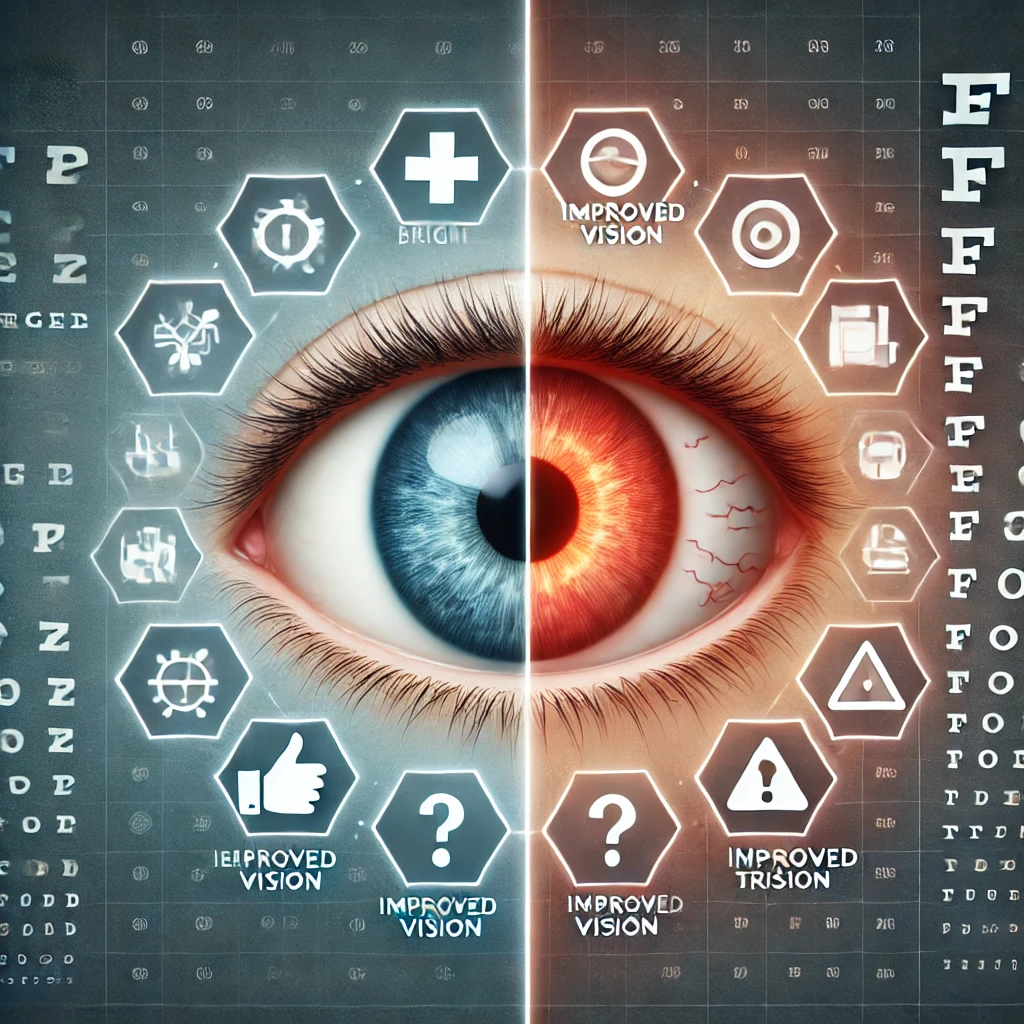

LASIK (Laser-Assisted In Situ Keratomileusis) eye surgery has become a preferred choice for vision correction, offering millions of people worldwide the opportunity to enjoy clearer vision without the need for glasses or contact lenses. But how successful is LASIK eye surgery in India, particularly in 2025? This blog covers the success rate of LASIK eye surgery in India, its effectiveness, potential risks, and who qualifies as an ideal candidate for the procedure.
India is home to some of the world’s top ophthalmology centers, providing high success rates for LASIK surgery. The overall success rate of LASIK surgery in India hovers around 96%-98%, which is on par with global standards. This statistic implies that the vast majority of patients experience significantly improved vision after the procedure.
While LASIK surgery is considered safe, it’s essential to understand that like any surgical procedure, there are risks involved. The risks associated with LASIK include corneal flap complications, night vision issues, dry eyes, and, in rare cases, vision loss. However, the failure rate of LASIK is less than 1%, and severe complications are extremely rare.
The LASIK failure rate is remarkably low, sitting between 0.3% to 0.5%. In cases where LASIK does not provide the expected results, enhancement procedures can often correct the issue. Though not 100% fail-proof, LASIK offers consistent results for most patients, and complications can usually be managed through follow-up treatments.
LASIK is highly effective, but it is not 100% foolproof. For some patients, there may be residual vision issues, such as slight nearsightedness, farsightedness, or astigmatism, even after surgery. Moreover, individuals over 40 may still require reading glasses post-LASIK due to age-related vision changes (presbyopia).
Quick recovery: Most patients experience improved vision within 24 to 48 hours.
High success rate: As mentioned earlier, India reports a success rate of 96%-98% for LASIK.
Minimal pain: LASIK is performed under topical anesthesia, making the procedure virtually painless.
No need for glasses or contacts: For many, the freedom from corrective lenses is life-changing.
Temporary side effects: Blurred vision, dry eyes, or glare around lights may occur during the recovery phase.
Potential for regression: Although rare, some patients may see a return of their refractive error over time.
Not for everyone: People with certain medical conditions or unstable vision prescriptions are not ideal candidates for LASIK.
Most patients report high satisfaction with LASIK. The patient satisfaction rate for LASIK in India is about 95%. Numerous factors, such as the skill of the surgeon, preoperative screening, and the equipment used, contribute to these high levels of satisfaction.
The majority of patients who undergo LASIK in India report excellent experiences. Positive testimonials mention improved quality of life, better night vision, and an overall sense of freedom from eyeglasses and contact lenses. Post-surgery care and following medical advice are crucial for a smooth recovery, reducing the risks of complications.
Although LASIK is safe and effective, there are some common side complications:
Some patients experience dry eyes post-surgery, requiring lubricating eye drops for relief.
These effects, especially at night, are common immediately after surgery but usually diminish over time.
Some patients may experience temporary fluctuations in their vision as their eyes heal.
In some cases, the surgery may not completely correct vision, necessitating additional treatment.
Not everyone qualifies for LASIK surgery. You are a good candidate for LASIK if:
Patients with high myopia, thin corneas, or certain corneal conditions may not be suitable for LASIK but could be eligible for alternative procedures like Contoura Vision or SMILE surgery.

With advancements in technology, such as Contoura Vision and SMILE surgery, LASIK continues to evolve, offering safer procedures and quicker recovery times. The introduction of wavefront-guided LASIK in many Indian clinics has helped improve outcomes by providing a more customized surgical experience tailored to each patient’s unique corneal shape.
The success rate of LASIK in India remains high, with the majority of patients enjoying clear, sharp vision post-surgery. If you’re eligible and prepared for the potential risks, LASIK can be a life-changing solution for those looking to get rid of glasses or contacts.
Before deciding on LASIK, it’s important to consult with a qualified ophthalmologist to determine whether you’re a good candidate. The key to a successful outcome lies in choosing a reputable clinic and adhering to pre and post-surgery care.
